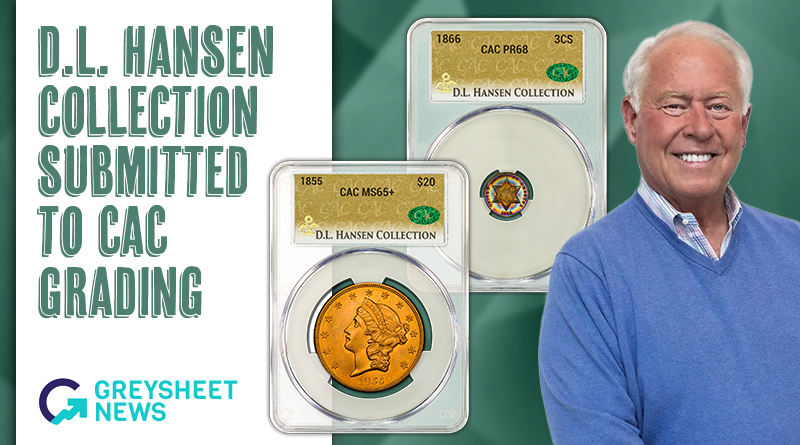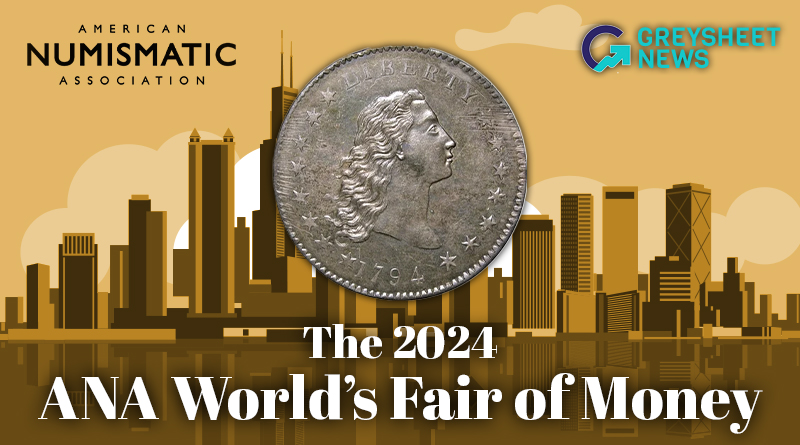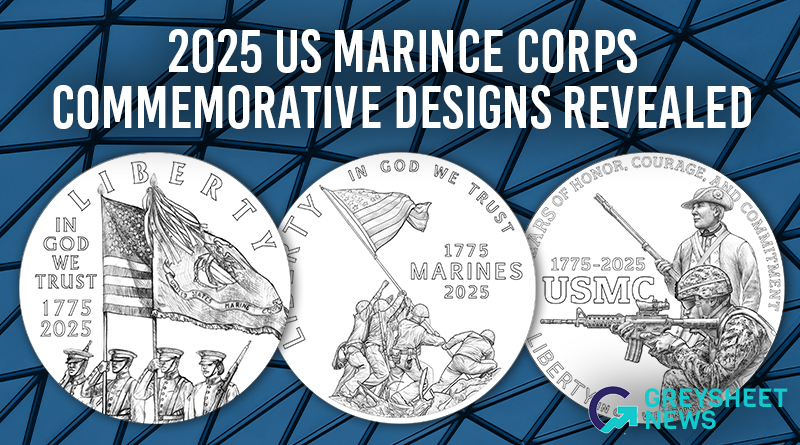- U.S. Coins /
- Small Cents /
- Flying Eagle Cents /
- Flying Eagle Cent Set 1c 4 Coins MS
Flying Eagle Cent Set 1c 4 Coins MS

1856 1C MS65 PCGS. Snow-3. Die Stage A....
Source: HA

1856 1C MS64 PCGS. CAC. Snow-9....
Source: Heritage Auctions
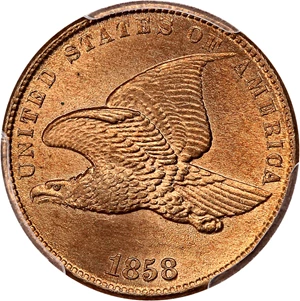
1858 Flying Eagle 1c PCGS MS66+ (Small Letters)
Source: David Lawrence Rare Coins
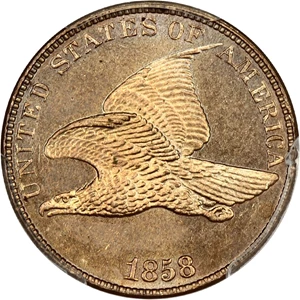
1858 Flying Eagle 1c PCGS MS66 (Large Letters) ex: D.L. Hansen
Source: David Lawrence Rare Coins
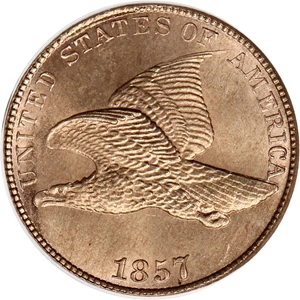
1857 Flying Eagle 1c PCGS/CAC MS66
Source: David Lawrence Rare Coins
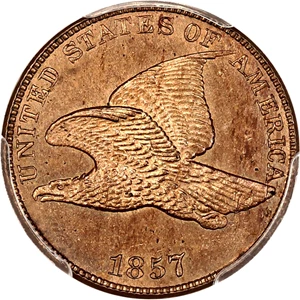
1857 Flying Eagle 1c PCGS/CAC MS64
Source: David Lawrence Rare Coins

1858 1c Small Letters PCGS VF35
Source: David Lawrence Rare Coins
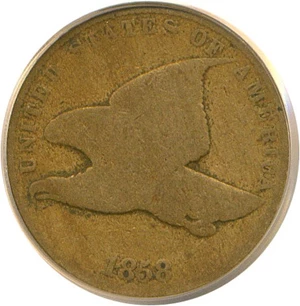
1858 1c Small Letters PCGS Good-4
Source: David Lawrence Rare Coins
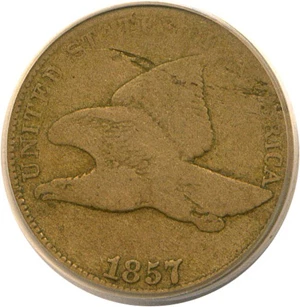
1857 1c Flying Eagle PCGS Good-6
Source: David Lawrence Rare Coins
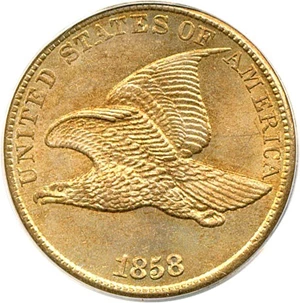
1858 1c Large Letters PCGS MS64
Source: David Lawrence Rare Coins
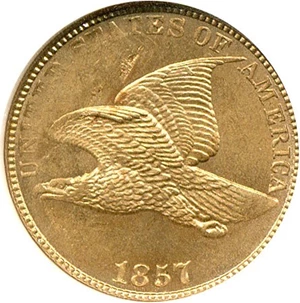
1857 1c Flying Eagle NGC MS63
Source: David Lawrence Rare Coins
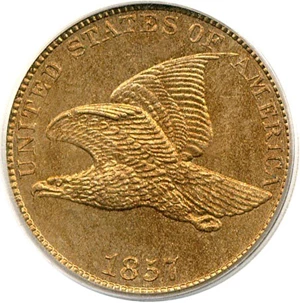
1857 1c Flying Eagle PCGS MS65
Source: David Lawrence Rare Coins
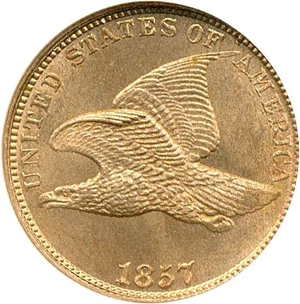
1857 1c Flying Eagle NGC MS65
Source: David Lawrence Rare Coins
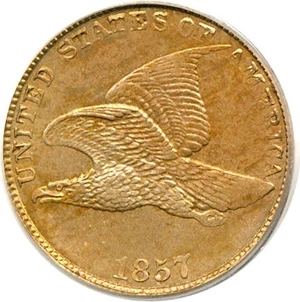
1857 1c Flying Eagle PCGS MS62
Source: David Lawrence Rare Coins
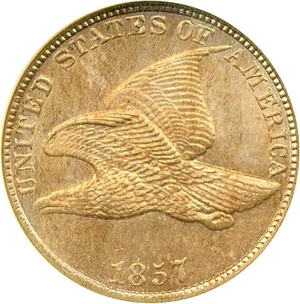
1857 1c Flying Eagle NGC MS65
Source: David Lawrence Rare Coins
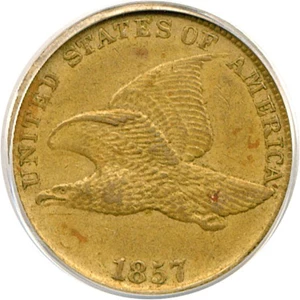
1857 1c Flying Eagle PCGS AU50
Source: David Lawrence Rare Coins
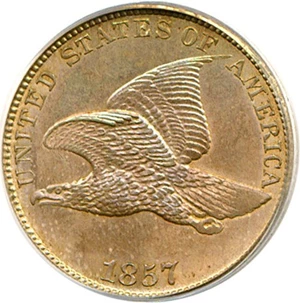
1857 1c Flying Eagle PCGS MS64
Source: David Lawrence Rare Coins
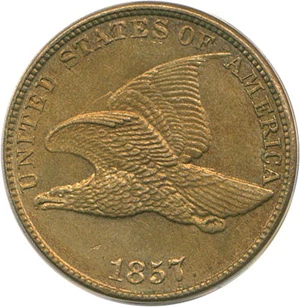
1857 1c Flying Eagle PCGS MS65
Source: David Lawrence Rare Coins
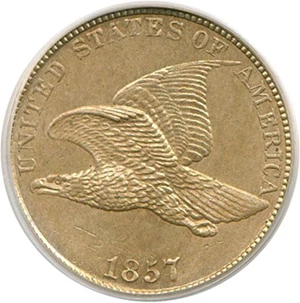
1857 1c Flying Eagle PCGS MS64
Source: David Lawrence Rare Coins
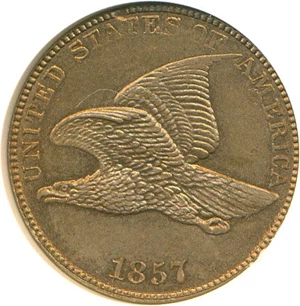
1857 1c Flying Eagle NGC MS63
Source: David Lawrence Rare Coins




















Greysheet Catalog Details (GSID: 78088)
America's first small-cent was the Flying Eagle cent, which was originally struck in 1856 as a pattern and was produced for mass circulation in 1857 and 1858. The change came after the United States Mint began experimenting with new pattern cents in the mid 1850s due to increased costs of producing the large cent. The Flying Eagle cent was designed by United States Mint Chief Engraver James B. Longacre and is an adaption of the Christian Gobrecht pattern silver dollars struck in the mid 1830s.
Approximately 1,800 Flying Eagle cents were struck with the 1856 date for use as presentation pieces, and possibly some were made at a later point to satisfy the demands of collectors who wanted examples of the coin. The Flying Eagle cent was officially unveiled for circulation on May 25, 1857, which was during the period that the United States government was demonetizing foreign coinage that was still circulating throughout the nation as legal tender. The Flying Eagle cent is made from a composition of 88% copper, 12% nickel, and were widely dubbed "nicks." Though the Flying Eagle cent was in regular production for just two years, more than 40 million were struck and became quite popular with the public.
For a coin that was produced for only two years (three when counting the popularly collected 1856 presentation piece, which did see limited circulation) at just the Philadelphia Mint, there are a surprising number of issues and varieties. These include the 1856 and 1857 regular issues, 1858 Large or Small Letters varieties, 1858/7 overdates, and proof specimens from 1856 and 1857, as well as proof variants of each the 1858 Small and Large Letters. While the Flying Eagle cent is widely collected as an extension of the Indian Head cent series, Flying Eagle pennies offer enough complexity as a standalone series to provide plenty of challenge to anyone desiring to focus solely on collecting and studying this first incarnation of the small cent.
Obverse: An eagle with wings extended in full flight fills the central obverse design with the words UNITED STATES OF AMERICA around the top periphery. The date is centered at the bottom.
Reverse: The reverse bears the denomination of ONE CENT in the center surrounded by a wreath bearing a ribbon tied in at the bottom center.
Catalog Detail
Greysheet & CPG® PRICE GUIDE
Related Stories (powered by Greysheet News)
View all newsAbout CDN Prices
All CDN prices are based on proprietary market knowledge and technology developed by CDN Publishing, LLC.
CPG® prices represent retail levels. Collectors should refer to CPG values as a starting place for their negotiations, or auction bid reference.
Greysheet/Greensheet prices are wholesale market levels for collectible coins/paper money intended to indicate what a dealer, or wholesale, buyer would pay for the described item in the specified grade. Greysheet/Greensheet represent "sight-seen" values based on a buyer's in-hand review. The actual value can be more or less than this depending on factors including eye appeal and market timing.
Bluesheet (NGC & PCGS) prices represent the highest sight-unseen offers to buy on dealer networks like CDN Exchange. In many cases, there are no active sight-unseen buy offers, so CDN looks to the recent lowest market values for such an item. For this reason, Bluesheet values typically represent the floor of the market for the specified item. CDN only tracks Bluesheet on certain items.
CAC prices are for U.S. coins that meet the standards of the Certified Acceptance Corporation. You can learn more about CAC on their web site.
Price movement is indicated for price changes in the last 30 days.
The prices listed in our database are intended to be used as an indication only. Users are strongly encouraged to seek multiple sources of pricing before making a final determination of value. CDN Publishing is not responsible for typographical or database-related errors. Your use of this site indicates full acceptance of these terms.


 Dealers Only
Dealers Only




